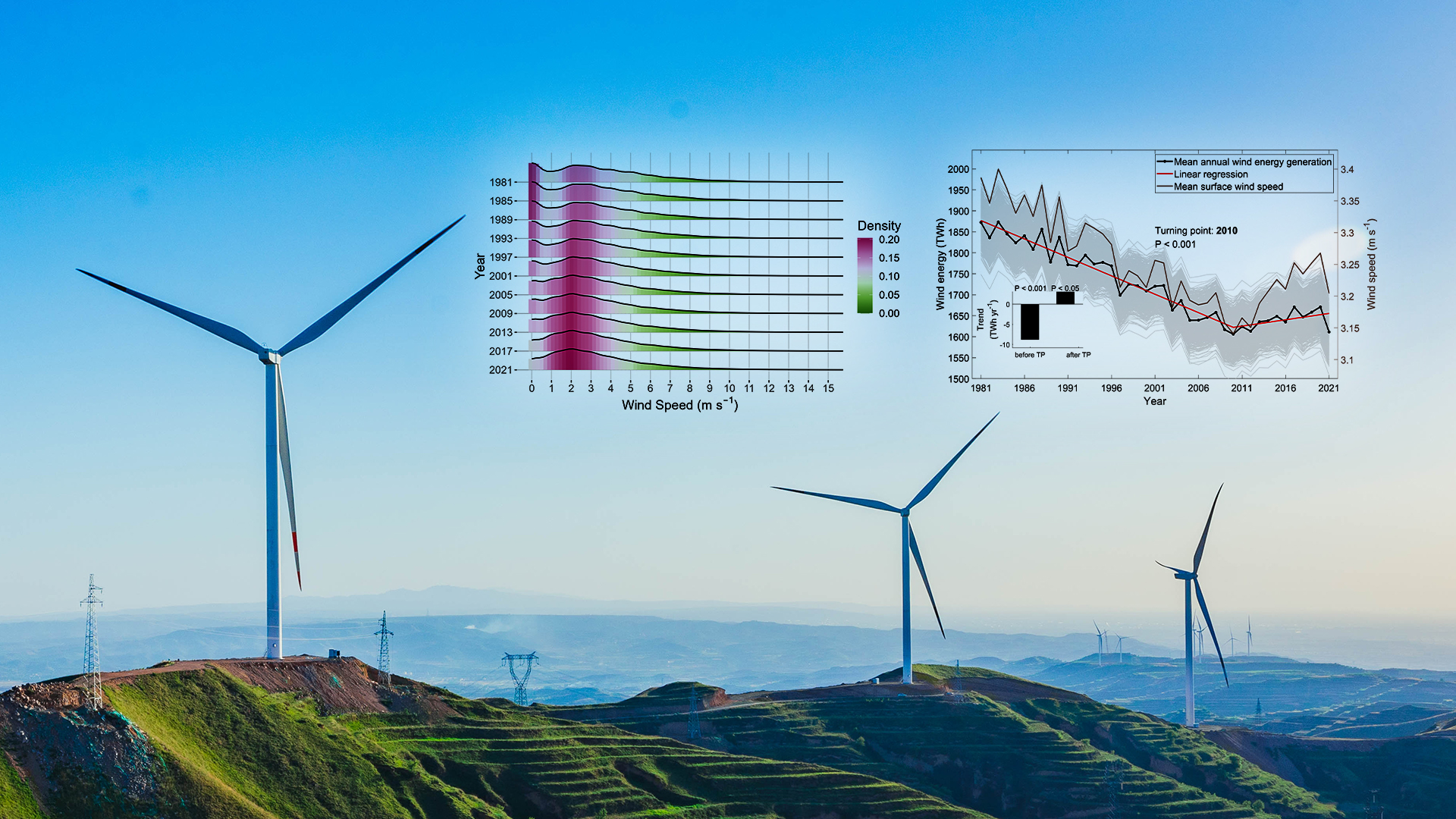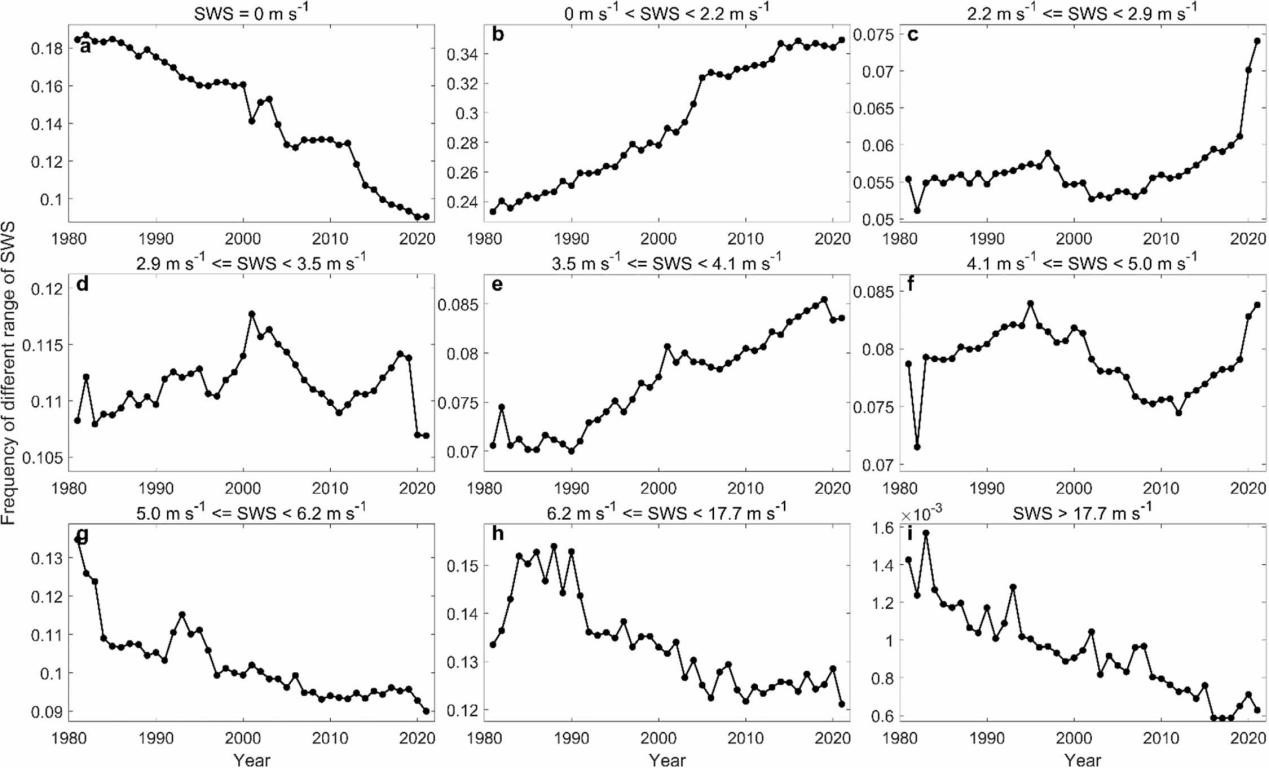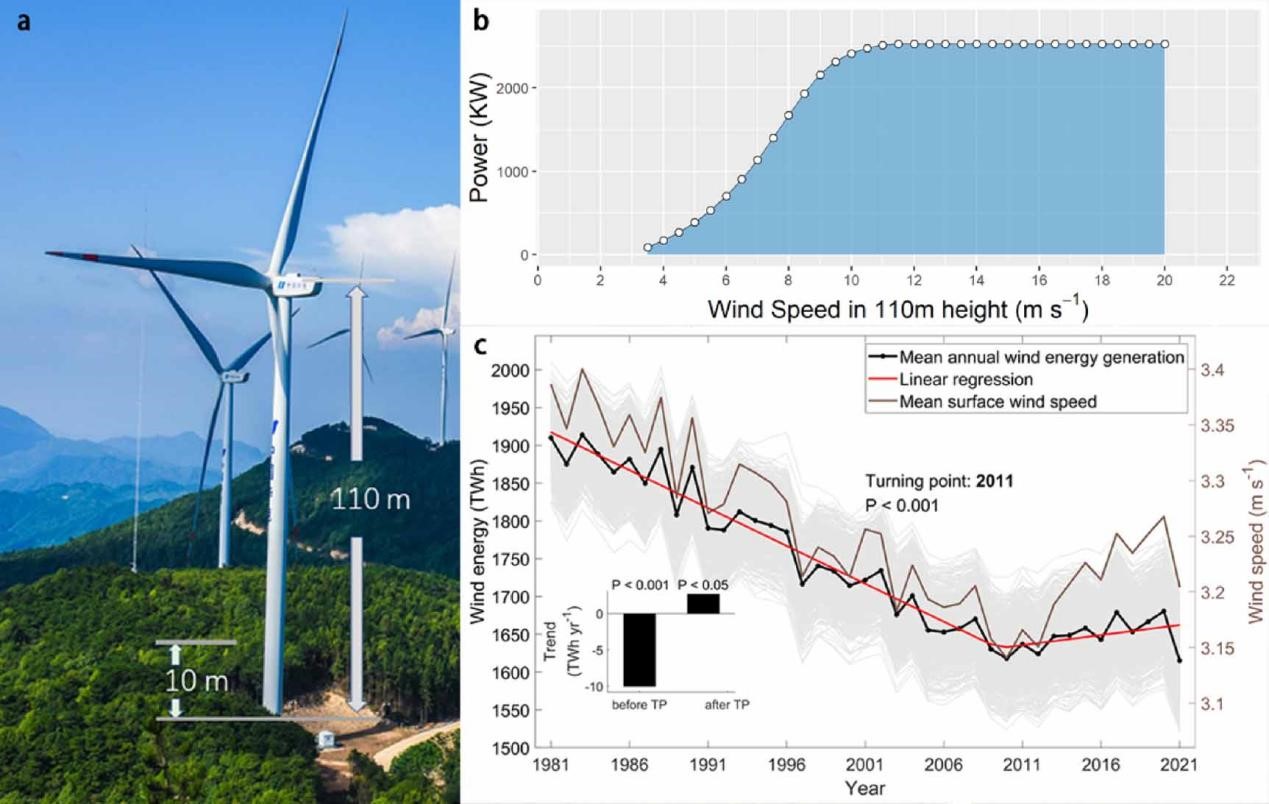Wind energy deployment is one of the crucial pathways to mitigate climate change and achieve near-zero carbon emission goals. In 2021, the global wind industry reached 94 GW power capacity addition, mainly driven by China, Europe, and the United States. Yet, the current installation rates suggest that meeting the 1.5 °C mitigation goal will still be challenging. Since wind power generated by wind turbines is directly proportional to the cube of wind speed, exploring the spatial and temporal variations in wind resources and analyzing the changes in effective wind speeds hold significant importance for wind energy development.

Yanan Zhao, a third-year undergraduate student of Associate Professor Zhenzhong Zeng’s research team from the School of Environmental Science and Engineering (ESE) at the Southern University of Science and Technology (SUSTech), has recently published a paper that delves into the in-depth exploration of the changes in terrestrial wind speed frequency over the past four decades and its impact on wind power potential.
The paper, entitled “Global assessment of spatiotemporal changes of frequency of terrestrial wind speed”, has been published in Environmental Research Letters, an internationally renowned journal in the field of environmental science and ecology.
Video 1. Associate Professor Zhenzhong Zeng’s team from the School of ESE visiting the Zhuhai Wind Farm for on-site research, with the towering wind turbines rotating against the wind
From 2015 to 2019, extensive research indicated that global surface average wind speeds exhibited a significant reversal around 2010 (0.09 m s-1 decade-1) after experiencing a continuous decline for four decades (-0.08 m s-1 decade-1). This discovery has sent a positive signal to the field of wind power generation. Further studies have indicated that the reversal in wind speeds between 2010 and 2017 led to a 17 ± 2% increase in wind power potential. However, most of these studies focused on the trend changes in average wind speeds without considering the frequency variations of effective power-generating wind speeds. Since 90% of a wind turbine’s power generation comes from wind speeds exceeding the 50th percentile, assessing the changes in the frequency of wind speed, especially the strong wind, becomes highly crucial.
This study employed a mathematical model to investigate the spatiotemporal changes in effective power-generating wind speeds. Based on wind speed data from 1,511 meteorological stations worldwide between 1981 and 2021, the wind speeds were divided into nine classes based on: (1) the cut-in and cut-out wind speeds defining the range of efficient SWS used in power generation; (2) the incrementing percentiles of SWS among efficient SWS. By statistically analyzing the frequency variations of different wind speed classes over the 41-year period, Yanan Zhao and the group discovered that the decline in average wind speeds from 1981 to 2010 was mainly driven by a significant reduction in strong winds (≥ 5.0 m s−1, Figure 1 g-i), with a contribution rate of 220.37%. However, during the past decade, when average wind speeds showed a significant rebound, there was no significant increase in the frequency of strong winds.
Meanwhile, light winds (0.1 m s-1 – 2.9 m s-1, Figure 1 b-c) witnessed a significant increase in frequency over the past four decades, accompanied by a notable decline in zero-wind frequencies, alleviating the considerable decline in average wind speeds before 2010 and dominating the wind speed reversal in the recent decade. This implies that the increase in favorable wind resources for wind power generation did not correspondingly match the rebound in average wind speeds. To further explore the impact of wind speed frequency changes on global wind power generation, the researchers utilized specific power curves of wind turbines (Figure 2b).
These results showed that compared to the decline rate of the wind power potential of -10.02 TWh yr-1 between 1981 and 2010 (Figure 2c), the wind power potential in the past decade only experienced a recovery rate of 2.67 TWh yr-1. This indicates that the wind power potential in the past decade did not exhibit the same magnitude of rebound as average wind speeds. This finding can provide valuable insights for wind power policy formulation and the development of renewable energy planning.

Figure 1. Frequency variations of different wind speeds from 1981 to 2021

Figure 2. Power curve of a wind turbine (b) and global wind power potential (c)
This study reveals the spatiotemporal variations in wind speed frequency and their impact on wind power generation amid a significant increase in average land wind speeds. It emphasizes the importance of studying changes in wind speed frequency and aims to provide valuable references for wind energy development.
Yanan Zhao is the first author of this paper. Associate Professor Zhenzhong Zeng from the School of ESE is the corresponding author, and SUSTech is the first affiliation of the paper.
This research was supported by the National Natural Science Foundation of China (NSFC), Guangdong Basic and Applied Basic Research Foundation, and the Start-Up Fund of SUSTech.
Paper link: https://iopscience.iop.org/article/10.1088/1748-9326/acc9d5
To read all stories about SUSTech science, subscribe to the monthly SUSTech Newsletter.
Proofread ByAdrian Cremin, Yingying XIA
Photo By